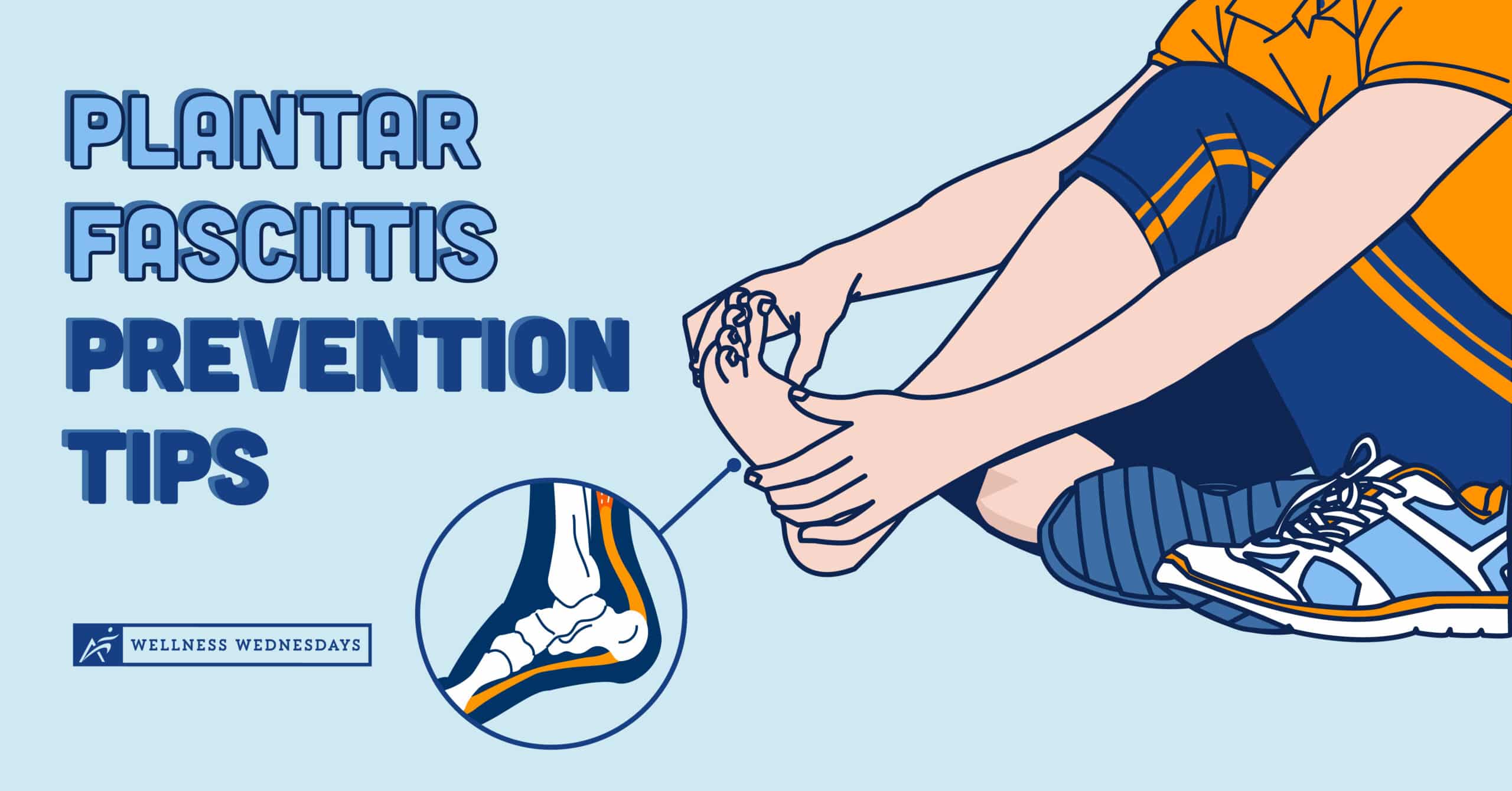The plantar fascia is a long, thick band of tissue on the bottom of the foot that supports your foot’s arch. Plantar fasciitis can develop when tension builds up, creating inflammation and pain.
The cause of plantar fasciitis isn’t always clear, but it can be the consequence of poor foot structures, such as overpronation, high arches, and overexertion. What can often start out as a minor nuisance can quickly grow into a painful and chronic injury if left untreated.
To keep plantar fasciitis from developing or getting worse, try practicing these measures for plantar fasciitis prevention!
5 Ways to Prevent Plantar Fasciitis
Rest and Ice
Rest and ice, play a crucial role in preventing plantar fasciitis by providing relief, reducing inflammation, and aiding in the healing process. Rest allows the affected foot to recover and reduces the strain on the plantar fascia. By minimizing weight-bearing activities and providing ample time for recovery, rest helps prevent further damage and promotes healing. Additionally, applying ice to the affected area helps reduce inflammation, swelling, and pain by constricting blood vessels. The combination of rest and ice can help protect the plantar fascia from overuse and prevent the onset of plantar fasciitis.
Avoid High Impact Exercises
Avoiding high-impact exercises can help prevent plantar fasciitis as it helps reduce the strain and excessive stretching on the plantar fascia. High-impact exercises, such as running or jumping, can place repetitive stress on the plantar fascia, leading to microtears, inflammation, and ultimately the development of plantar fasciitis. By opting for low-impact alternatives like swimming or cycling, individuals can engage in activities that provide a workout while minimizing the impact on the feet. This also allows the plantar fascia to rest and recover, decreasing the likelihood of overuse injuries and the onset of plantar fasciitis.
Upgrade Your Footwear
Your shoes can play a major role in keeping your feet comfortable throughout the day. Avoid walking around in flip-flops or worn-out shoes that don’t provide any support. Footwear that’s flimsy and flat can put undue stress on the toes, calves, and feet.
Additionally, consider getting a pair of arch-supporting footwear when shoe shopping or buying foot insoles to protect your feet. By providing arch support and shock absorption, shoe inserts help reduce the strain on the plantar fascia during activities, especially when wearing shoes that lack sufficient support. They can also help correct biomechanical imbalances, such as overpronation or high arches, which can contribute to the development of plantar fasciitis.
Stay Active
As mentioned, high-impact activities should be modified or avoided to reduce overuse or strain. However, it would be best if you kept active in some form as it can be beneficial for individuals with plantar fasciitis as it promotes circulation, flexibility, and overall foot strength.
You can keep your feet strong and resilient to everyday wear and tear by staying active. If you work at a desk, take a few breaks throughout the day to get up and walk around. If your profession requires you to be on your feet, do a few exercises to strengthen your hips, legs, and ankles. Building these muscles will help improve your body’s stability and reduce your risk of developing an injury like plantar fasciitis.
Stretch It Out
When your arches, calves, and Achilles tendons are tight, they can tug at and stress the plantar tendon. Stretching and performing targeted strengthening exercises can help relieve this tension. Start getting into the habit of stretching those muscles, especially after a long period of rest.
If you’re suffering from the effects of plantar fasciitis or foot pain, try these three exercises and stretches that can help with plantar fasciitis prevention:
*Disclaimer: Always consult with your doctor before starting any exercise program. If you experience any numbness, tingling, or reproduction of your symptoms, please contact your doctor.
- Sit in a chair to help control the pressure put on your feet.
- Take a lacrosse ball and place it under your affected foot.
- Apply downward pressure on the lacrosse ball with the foot.
- Stay off the heel & ball of the foot, keeping the ball inside the foot.
- Move the ball under your foot to find tender spots.
- Once you are on a tender spot, hold the position while applying pressure.
- Continue to massage for up to 30 seconds.
Put Your Best Foot Forward
While ice, rest, shoe inserts, and other methods of relief may temporarily ease your discomfort, the injury may reoccur unless you address the underlying cause. For persistent or acute plantar fasciitis pain, schedule an appointment with Airrosti.
Our Providers are highly trained at treating plantar fasciitis through manual therapy and exercises to strengthen weak and tight muscles to treat it directly at its source. Our Providers can determine the root cause of your pain and will create a personalized treatment plan for your condition and provide resources to help you continue your recovery at home so you can run, dance, and live pain free.
Call us at (800) 404-6050 for more information.
View our Medical Disclaimer here.










